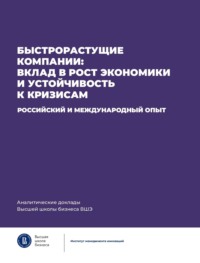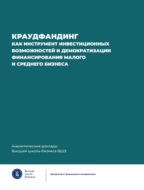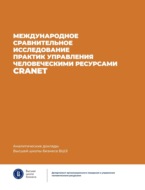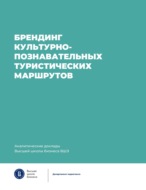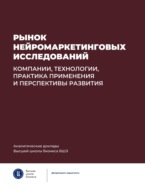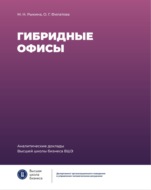Czytaj książkę: «Быстрорастущие компании: вклад в рост экономики и устойчивость к кризисам. Российский и международный опыт», strona 2
Из негативных последствий пандемии компании чаще всего сталкивались со снижением спроса (24 %). В этой категории назывались падение объема работ и услуг, замораживание проектов у заказчиков, закрытие и уход с рынка контрагентов. Следующей по частотности была группа различных проблем с персоналом (19 %), в том числе нехватка работников, рост нагрузки на оставшихся, вынужденные увольнения сотрудников из-за снижения оборота, простои из-за заболеваний и самоизоляции, смерть сотрудников. Падение рентабельности и подобные проблемы (17 %) компании связывают с ростом цен, ростом имеющихся расходов или возникновением новых (например, на обеспечение санитарных мер и т. п.), снижением выручки при выросших расходах.
Среди мер поддержки бизнеса в период пандемии, которыми воспользовались опрошенные компании, чаще всего они называли уменьшение размера страховых взносов и предоставление отсрочки (23 %), льготные кредиты на выплату заработной платы сотрудникам (19 %) и ограничение проверок (14 %). При этом 48 % компаний господдержкой в период пандемии, по их утверждению, вообще не пользовались.
Что касается господдержки в целом, то только 22 % компаний утверждают, что пользовались ею за последние пять лет. На первых позициях оказались инструменты кредитно-финансовой поддержки. Первые три места среди организаций, которые компании смогли назвать как оказывавших им поддержку в последние пять лет, заняли банки, предоставившие льготные кредиты. Прежде всего это кредиты со сниженной ставкой или с иными льготными условиями. Из различных институтов развития компании чаще всего называли региональные структуры поддержки бизнеса, Корпорацию МСП (вместе с «МСП Банком») и Российский экспортный центр.
Нефинансовые инструменты господдержки имели чуть большую популярность: использование хотя бы одного типа инструментов (например, образовательные, административные, консультационные и др.) отметили 45 % компаний. Однако в большинстве случаев компании применяли только какой-то один тип инструментов. Самые популярные типы инструментов (административная поддержка региональных властей и консультации региональных агентств поддержки бизнеса) были названы максимум 17 % компаний. Это говорит о том, что компании не слишком активно стремились воспользоваться предлагаемыми им государством нефинансовыми инструментами поддержки.
Примечательно, что даже в условиях постпандемийных кризисных явлений и серьезных внешних и внутренних шоков весны 2022 г. опрошенные компании ориентированы в основном на рост, а не на выживание. В ответах на вопрос о дальнейших планах на первые позиции вышли варианты, связанные с планами БРК по росту выручки, продаж или выпуска (34 %), сохранению и увеличению рабочих мест и доходов сотрудников (31 %). Проблемы выживания и сохранения стабильности заняли в ряду приоритетов только 3-е место (29 %).
Executive summary
Recent (2020–2022) studies by researchers in many countries confirm the previously formulated hypothesis that high-growth companies (HGCs) make a significant, if not decisive, contribution to employment growth and economic growth dynamics. A new topic became the study of the behavior of HGCs in crisis situations. Interest in this topic is primarily associated with the COVID-19 pandemic and the search for ways out of the crisis provoked by the pandemic. Researchers note the increased resistance of HGCs to crisis phenomena and even their ability to find additional incentives for further rapid growth in these difficult conditions.
In this regard, during the pandemic, different countries continued to actively develop and launch support programs for HGCs, both at the national and regional levels. In particular, in the UK and the Scandinavian countries, interesting new programs have begun to be implemented, which use the “scalerator” toolkit in their design (development of an accelerator concept for mature scaling companies). However, the most large-scale and systemic-wide program, penetrating almost the entire national economy, was launched in China: in 2022, it received the highest levels of political support and became a key priority for the country’s economic and innovative development.
The sample of HGCs reviewed in the report included 28,617 companies: this represented 0.76 % of the total number of Russian companies, or 15 % of the initially selected companies with more than 10 employees. Such a small share of HGCs (0.76 %) is explained not so much by the fact that other firms are growing slowly, but by the fact that 95 % of Russian legal entities have less than 10 employees.
In Russian HGCs, as in all Russian companies as a whole, small and micro business dominates (83 % of all companies). At the same time, an extremely small share of medium-sized companies (9 %) is noticeable. For the majority of Russian HGCs (40 %), over the three analyzed years, revenue grew by 20–30 % annually. At the same time, the combined share of companies that have grown at an impressive rate of over 50 % annually is over a quarter (27 %) of all HGCs. An analysis of the age of companies shows that although the largest share (45 %) of HGCs belongs to relatively young companies (under 10 years old), while only 7 % of them are very young (under six years old). The leading positions in the distribution by regions are taken by the Volga Federal District (19 %, 5,427 companies) and the Central Federal District excluding Moscow (18 %, 5,102 companies), as well as Moscow (18 %, 5,033 companies).
The total revenue of HGCs increased from 9.4 trillion rubles in 2017 to 26.1 trillion rubles in 2020, growing by 41 % annually. Aggregate employment increased from 1.5 million to 2.5 million people, with an average annual increase of 18 %. In turn, the output per employee at HGCs doubled from 2017 to 2020 (192 %), an average of 24 % annually. This suggests that HGCs have a high rate of return per worker, whereby they manage not only to create a large number of jobs, but also achieve growth through improved labor productivity, rather than extensive growth in employment.
Comparison of HGCs’ revenue dynamics and other companies (with more than 10 employees) shows that HGCs, accounting for less than a sixth (15 %) of all companies, is responsible for generating 60 % of revenue growth. Extrapolating this observation in regards to all Russian companies, it can be argued that in Russia, it is HGCs that make the main contribution to economic growth, which corresponds to similar conclusions of foreign researchers based on materials on other countries.
The largest share of HGCs, in terms of the number of companies in different sectors of the economy, includes trade (20.9 %), construction (14.5 %), and knowledge-intensive market services (14.3 %). The share of HGCs in the construction sector is about 1.5 times higher than in the economy as a whole. Among companies in the third-ranked “knowledge-intensive market services” sector, 25 % are in architecture, engineering and technical consulting in these areas, which correlates with a high percentage of companies in the construction sector and is possibly a «spillover effect». All this suggests that, in the period 2017–2020, construction was one of the growth engines for the country.
Within all HGCs, a segment of high-tech sectors (“technogazelles”) was identified, which, in the context of this report, include high-tech production, medium-tech production and high-tech knowledge-intensive services. The latter make up half of the total number of technogazelles. In general, technogazelles account for 3,534 companies, that is, only 12.3 % of all HGCs. Particular attention to this sector is driven by the important role of such sectors in ensuring the technological development of the economy.
Leading positions in terms of total revenue, as well as in terms of the number of companies, are occupied by trade, construction and knowledge-intensive services. As for the revenue of technogazelles, in 2020 it amounted to 2.652 trillion rubles, which is comparable to the construction sector, that is, it puts them in second place among all sectors of HGCs.
The average revenue per HGC in 2017 came to 336 million rubles, and in 2020, this figure almost tripled, reaching 914 million rubles. The leading positions in terms of revenue per company are occupied by mining, trade and high-tech production. In terms of employment in a single company, mining, high-tech production and energy took the leading places. It can be stated that, in the extractive industry and high-tech industries among, HGCs are mainly large companies.
Leadership in absolute revenue growth belongs to mining, trade and high-tech production. These sectors are not only represented by large companies, but also provide the largest increase in revenue per company.
The most interesting are companies whose rapid growth is sustainable and long-term, since most HGCs only grow sporadically. In this regard, an analysis was made of repeated episodes of the growth of HGCs that took place in the past (for a period back to 2012). It turned out that not a single episode of high growth, except for the first and only one, was observed in about a quarter (23 %) of all HGCs. At the same time, most of the companies that did not have experience of previous high growth are represented in the following sectors: high-tech and medium-tech production (32 % and 26 %, respectively); construction (25 %). This suggests that many new high-growth market players had appeared in these sectors by 2020.
In contrast, among those sectors with the least number of companies that did not experience rapid growth in the past, there are such as mining (17 %), high-tech knowledge-intensive services (20 %) and agriculture (21 %). It can be argued that HGCs in these sectors of the Russian economy demonstrate the most stable growth.
Companies with the highest number of episodes of previous high growth also deserve attention. These are the few companies that grew rapidly during the entire period under consideration (from 2012 to 2020). In total, 745 such “super-impact-resistant” companies were identified among HGCs.
The total number of exporters among the observed HGCs turned out to be very small. Only 5 % of all HGCs from the sectors examined have ever had an export activity during their period of high growth (2017–2020). Despite the small number of exporters, they make a significant contribution to the total revenue of HGCs. The total revenue of HGC exporters in 2020 amounted to 6.8 trillion rubles (26 % of HGCs’ total revenue). This suggests that, first of all, rather large companies go out for export: the average revenue of a HGC exporter is 4.7 billion rubles. The share of technogazelles among exporters is more than twice as high as their share among all HGCs (26.2 % versus 12.3 %, respectively). This indicates a high export activity of companies from high-tech sectors.
An analysis of the sustainability of the growth of HGC exporters showed their insignificant differences from companies that were not engaged in export. It can be argued that access to export is not yet a reliable basis for the long-term growth of Russian business.
As a result of the analysis, 1,413 companies were identified among HGCs, which were identified as innovative. They make up 5 % of the total number of the Russian HGCs. At the same time, in terms of revenue, innovative HGCs account for 16 % of all HGCs. This indicates that among the innovative HGCs, there are companies with a relatively higher amount of revenue than for HGCs as a whole. Quantitatively, 2/3 of innovative companies are concentrated in three technology sectors: the sector of high-tech knowledge-intensive services (41 %), medium-tech (15 %) and high-tech industries (9 %). It can be argued that, in the HGC segment, innovation is closely related to high-tech sectors.
In terms of export activity, innovative HGCs also differ from the general population of HGCs. In particular, among them, 20 % of companies are exporters, while for HGCs as a whole, exporters make up only 5 %. This means that operations in foreign markets stimulate the innovative activity of HGCs and vice versa.
An analysis of high growth sustainability clearly shows that innovative HGCs experience high growth episodes much more frequently than other HGCs, and this occurs over all of the periods under observation. The gap is especially large (by 2.1 times) in terms of the share of companies that had the maximum number of episodes of high growth: 5.4 % for innovative companies and 2.5 % for the remaining companies. Indeed, the presence of such assets as patents, investments in R&D, the ability to work with complex technologies and equipment, and a team of qualified specialists create a solid foundation for long-term growth. In relation to this, a promising direction in supporting HGCs could be state support for innovation- companies.
The results of the survey conducted with the application of a formalized interview method made it possible to see the companies’ expectations, not only of the situation in 2020, but also in 2021 (and to a certain extent, even early 2022). In particular, the survey showed that HGC respondents are generally positive about the results for both 2020 and 2021 (the ratings for all 17 indicators are above average). At the same time, companies assess the period 2017–2020 more positively than 2021 compared to 2020. The most active growth was in revenue, the level of utilization and equipment of production facilities, as well as the volume of attracted credit resources.
Upon comparison of the data obtained on HGCs’ assessments of their own development with already published information on the rapid growth in 2021 of the indicators of the largest Russian companies (the “Expert-400’” rating), it can be stated that this growth, based on a “price rally” in the global commodities market, did not serve as a driver for the domestic Russian market, where most Russian HGCs operate. It can be assumed that there will be a much larger representation of large, commodity and export-oriented companies, as well as related SMEs, among the 2021 gazelles.
About half (43 %) of the companies surveyed either do not develop new products and technologies at all, or they rate themselves as developers of new products and technologies quite low (by 2–3 points out of 10) compared to their competitors. At the same time, companies with higher assessments of their innovative activity assess their development indicators much more positively, thus confirming the hypothesis that sustainable growth is related to the innovative activities of HGCs.
The main factor that determined the situation in 2020 was, of course, the coronavirus pandemic. Despite overall growth between 2017 and 2020, many companies falling into the HGC category have been severely affected by the effects of this pandemic. In this regard, their assessments of the impact of the “coronavirus crisis” on their business were especially interesting. Most Russian HGCs (42 %) claim that this pandemic did not affect them at all, 33 % assess its impact rather as positive, and 26 % as negative. In turn, 23 % of companies have seen increased demand for their products or services. A significant number (20 %) of companies noted the positive effects of remote work. Furthermore, a significant proportion of companies took advantage of the problems of their competitors for market expansion (17 %).
Speaking about the negative consequences of the pandemic, companies most often mentioned a decrease in demand (24 %). In this category, a decline in the volume of work and services, the freezing of projects with customers, the closure and withdrawal of contractors from the market were noted. The next most frequent was various problems with personnel (19 %), including a shortage of employees, an increase in the burden on those who remain, forced layoffs of employees due to a decrease in turnover, downtime due to illness and self-isolation, and death of employees. The drop in profitability and similar problems (17 %) of companies are driven by rising prices, an increase in existing costs or the emergence of new ones (e.g., ensuring sanitary measures, etc.), and a decrease in revenue with increased costs.
